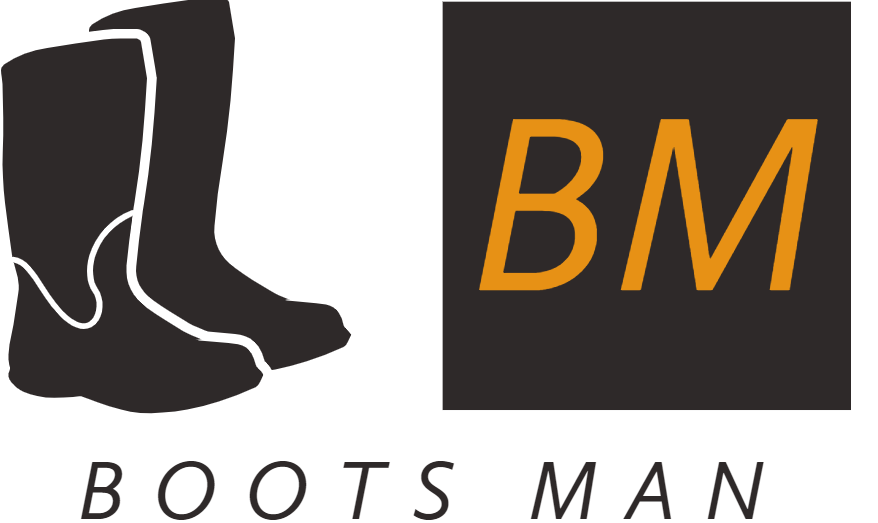Are you searching for a reliable, comfortable pair of work boots for your heavy-duty job in the warehouse? Look no further!
This guide will provide you with key information and advice on finding the ideal steel toe boots, complete with safety and comfort features. Invest in the right footwear and ensure you have the protection you need to do your job safely.
This guide is designed to provide essential information on the features, advantages and selection criteria for choosing the best safety shoes when dealing with daily duties in a warehouse environment. This can save you time, money, and maybe even some backaches throughout your heavy-duty working day. Industrial workers often have to endure long hours in noise-filled warehouses standing on hard concrete surfaces, so having a comfortable pair of shoes that provide the necessary protection for your feet is extremely important.
Warehouse safety shoes are specifically designed and developed to resist heat, oil, abrasion, and most chemical and electrical hazards encountered by industrial workers. Steel toe boots or composite toe boots are the most common types of protective footwear found in industrial workplaces as they provide impact and crush resistance for your feet. Moreover, specialized nonslip soles offer excellent grip on slippery surfaces while appropriate cushioning guarantees comfort throughout your shift.
In this comprehensive guide you will learn:
- Which features create the best steel toe boots or composite toe boots
- Which safety standards are used in safety shoe production
- Where to buy warehouse safety shoes
- Tips on maintaining steel toe boots/composite toe rubber sole boot to keep them looking new
Use this guide as a reference when making your decision on what type of industrial footwear will work best for you when going into battle with any typical warehousing task.
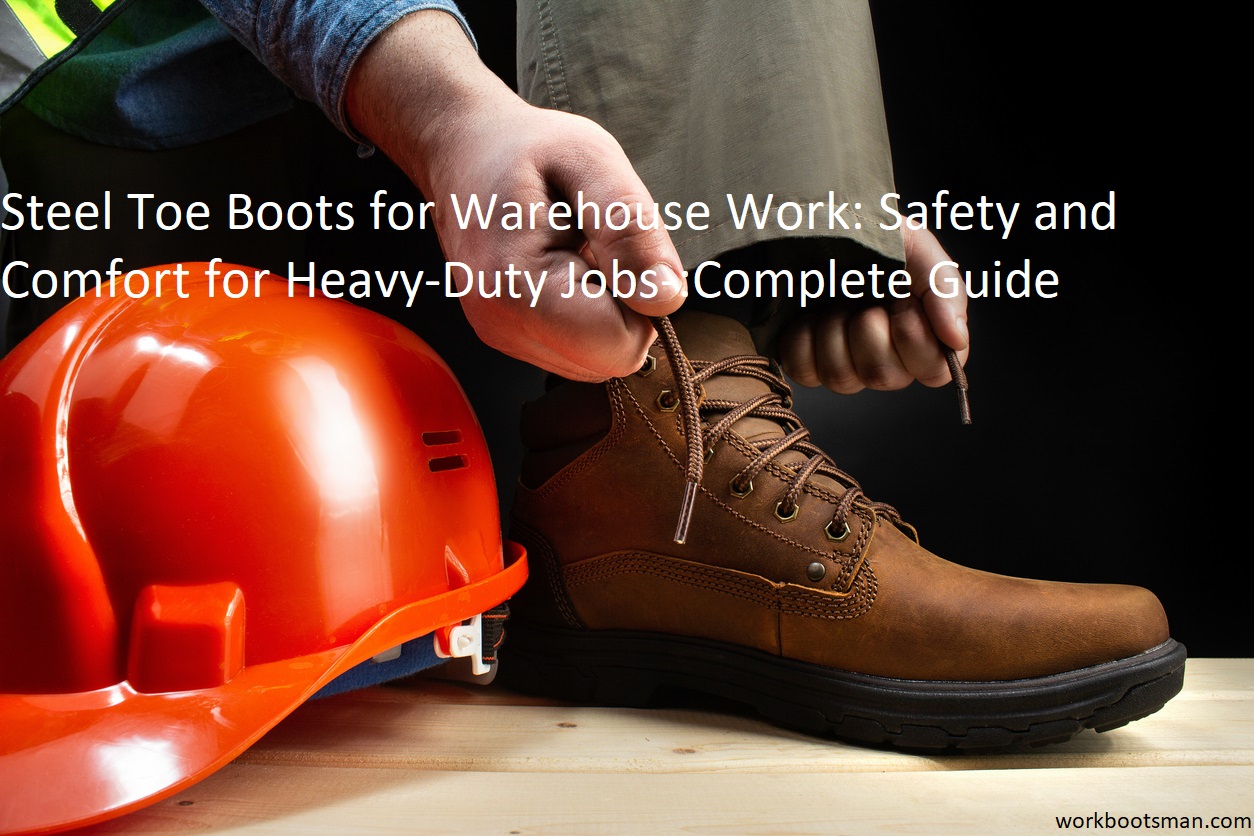
The Importance of Safety
Warehouse work is a tough job that presents numerous potential hazards to employees’ safety and health. These dangers include heavy machinery, loads of equipment and tools, and improper footwear that can cause physical harm or even fatalities. To ensure the utmost safety in the warehouse working environment, it is essential to find the right type of safety shoes that provide both protection and comfort.
Steel toe boots are an ideal choice for providing heavy-duty protection in hazardous warehouse environments. Steel toe shoes are specifically designed with a steel plate in the toe area that meets industry-specified standards of strength, stiffness and impact absorption. This protective plate prevents the weight of falling items from crushing against toes, as well as shields against other potentially dangerous workplace incidents such as slipping or dropping objects on feet. With steel toe boots, workers can walk through hazardous areas with peace of mind while avoiding potential injuries on their feet from sharp objects or sudden impacts from heavy objects falling from high places.
Hazards in the workplace
Warehouse workers are exposed to a variety of potential hazards that can lead to injury. Common risks include slips, trips, and falls due to material debris on the floor, heavy objects that may topple over, or uneven surfaces; objects falling from high shelves; and contact with sharp machinery. The right protective footwear can help reduce the risk of these incidents in the workplace.
Steel toe boots provide protection against impact and compression hazards that could otherwise cause serious harm or even death to employees working in these high hazard environments. Steel toe boots are also designed with slip-resistant outsoles to provide superior traction on slick surfaces and uneven terrain. This helps prevent slips, trips and falls resulting from unexpected shifts in weight distribution while walking or running on wet, oily or dusty job sites. Additionally, steel toe boots have padded collars and toes which cushion the impact of sharp items encountered while completing outdoor tasks. Prolonged standing often causes sore feet so many of these safety shoes also feature breathable materials as well as arch supports for added comfort during long shifts.
The role of steel toe boots in preventing injuries
Steel toe boots protect workers from hazards in the warehouse, such as falling objects and crushing, that could result in serious injury. Steel toed boots are made of steel or another hard material that completely covers toes, providing a solid barrier between feet and potentially harmful objects or debris.
When exposed to physical hazards like nails, sharp objects or heavy machinery, steel toe boots can provide additional layers of protection and prevent the risk of serious injury, such as broken bones or amputation. Steel toe boots also come with protection against slipping. Insulated lining helps keep out cold temperatures present in warehouses and other workplaces, while shock-absorbent mid-soles cushion the foot from walking on hard floors. These features improve worker comfort during heavy-duty jobs.
Lastly, steel toe boots are designed with a slip-resistant outsole for safety on slick surfaces like wet floors inside warehouses and other slippery environments encountered during warehouse work activities.
Safety regulations and standards
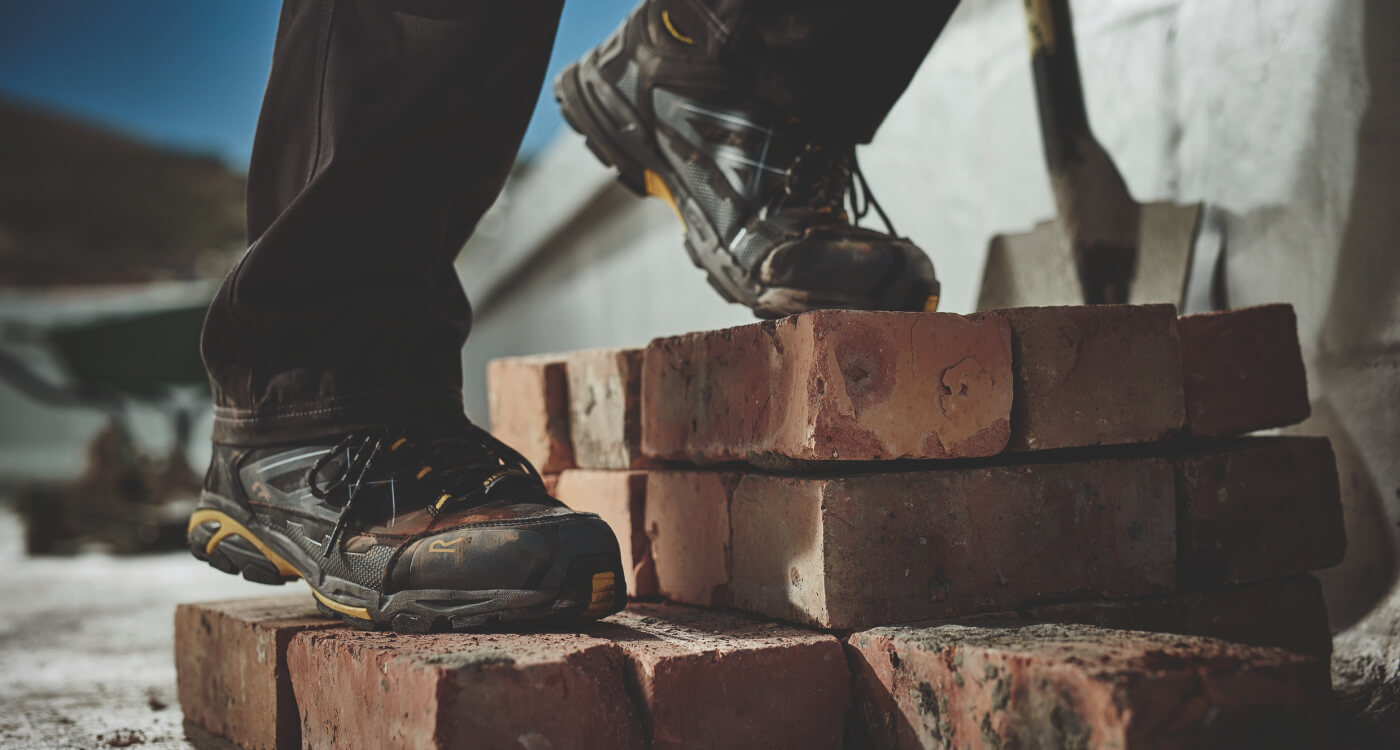
When it comes to protecting yourself and your workforce, it is essential to stay up-to-date with the most current industry safety regulations. Depending on what regulations apply to your particular job or warehousing operations, you may need specific footwear such as steel toe work boots in order to ensure your employees’ safety.
In the United States, the Occupational Safety and Health Administration (OSHA) mandates several safety standards that protect employees from a variety of workplace hazards, including those associated with feet and ankles. If you work in a warehouse or other retail location, you may be subject to having certain types of durable footwear available for every employee who will come into contact with any form of machinery or equipment.
When it comes to safety standards in general, the American National Standards Institute (ANSI) is responsible for creating and certifying guidelines around a wide range of products and services — including those related to steel toe boots or shoes. ANSI’s standard A541 covers specifications for protective footgear intended for use in general-duty as well as construction occupations; any compliant pair of boots must also pass ASTM F2413’s 170 lb impact test.
To ensure that both you and your staff stay safe while completing various tasks during shifts, it is important that any steel toe shoe meets all applicable requirements specified by governing bodies such as ANSI and OSHA. Knowing more about workplace safety regulation can help ensure that all team members are properly protected when working indoors or outdoors at their job sites anytime throughout the year.
Key Features of Steel Toe Boots
When selecting a pair of steel toe work boots, certain features should be kept in mind. The steel toe should not be the only factor of importance, since there are many other safety requirements and general comfort needs which need to be satisfied as well. Commonly-selected features for heavy-duty steel toe boots include:
- Protection and Durability: Generally, faux leather uppers are preferred for warehouse and construction work environments due to their durability and resistance to water, oils and other liquids. It is also important to note that many different types of toe protection, including aluminum alloy toes, exist as well as the traditional steel namesake. Non-metallic safety toes offer increased insulation from cold temperatures as well as improved comfort levels while offering the same benefit in terms of impact protection.
- Comfort technologies: A variety of comfort technologies are available in certain models such as waterproofing elements or breathable membranes designed to keep feet dry while still allowing proper air circulation to take place inside the boot itself. Padded insoles act in a similar manner to provide more cushioning for your feet during extended periods of wear.
- Slip resistance: For wet and greasy areas, it’s important to select work boots that feature an effective slip-resistant sole which can help reduce incidents of slipping or sliding on dangerous surfaces. High traction lug outsoles which disperse pressure when walking will also provide additional traction on uneven surfaces or on staircases or ladders.
Protective toecap
Steel toe boots, otherwise known as safety boots or steel-capped boots, are a type of work boot with a protective toecap integrated into the structure. They are designed with reinforced toes to provide protection from falling objects and compression in hazardous working environments. Steel toes also protect workers from hazards such as rollover, kickback, and sharp edges.
The outsole of these specialised boots is usually made from a sturdy rubber to provide sure footing. Depending on the industry, some steel toe boots could also be slip-resistant or electrically conductive according to your workplace requirements.
If you’re looking for added protection, it’s worth checking if your work boots have certain ratings that guarantee durability and quality for different types of practices and terrains like ASTM F2413 certification. Moreover, look out for waterproofing capabilities and breathability —this ensures dryness and comfort over extended periods of use.
Slip-resistant outsole
Slip-resistant outsoles are designed to help improve the traction of industrial workers from slipping on wet floors and other hazardous surface conditions. Generally, the slip-resistance of a boot has been determined by two factors: its slip-resistance rating and its tread pattern. Slip resistance ratings are determined by a scale known as the Americans With Disabilities Act or ADA coefficient. This rating is used to compare a sample of different shoe outsoles on wet and dry surfaces in laboratory testing. The higher an outsole’s ADA coefficient, the more slip-resistant it is considered to be.
Many steel toe boots now have industry specific ratings for various designs, materials, and tread patterns. It’s important to select an appropriate outsole for your work environment as some areas might have more traction requirements than others. In addition to the actual outsole material itself, it’s also important to choose a boot with a deep tread pattern that will help increase friction with the ground surface while resisting caking up with dirt or debris. Examples of trending deep tread patterns include herringbone outsoles and crosscut diamond outsoles which are commonly found on warehouse worker steel toe boots today.
Breathable materials
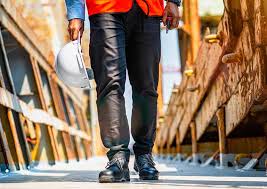
For warehouse work, breathable materials such as leather and waterproof synthetics are favored for the durability needed to handle the wear and tear of heavy-duty jobs. Leather has natural breathability, being able to help move moisture away from your feet, allowing them to stay cool and comfortable.
Waterproof synthetic materials can also offer breathability, although a good measure of it may be determined through product specifications instead of actual feel. Look for keywords like “hydro-shield” when shopping; they indicate proven water resistance combined with breathable properties.
Proper Care and Maintenance
In order to keep your steel toe boots in good condition and ensure your optimum safety and comfort while wearing them, proper care and maintenance must be done. Regular cleaning is necessary to keep steel toe boots clean and free from dirt, oil, grease, and other debris to maintain optimal functionality. Additionally, it is important that steel toe boots are treated regularly with waterproofing spray or polish in order to maintain the integrity of the material.
When getting prepared for cleaning or treating your steel toe boots, you should make sure that the material of your boot is appropriate for whichever cleaner or treatment you choose. Furthermore, when purchasing a cleaner or treatment for your steel toe boots make sure that it is designed specifically for this type of footwear as using any other cleaning product can damage the boot.
At least once every month, you should use a damp cloth or soft brush with warm water and a mild detergent solution to clean away dirt buildup on each pair of steel toe boots before it has time to build up and potentially ruin the material. When drying wet steel toe boots make sure there are no direct sources of heat like open flames or emitting heat such as an oven as this can cause warping in the shape of the boot leading to a decrease in protection provided by them. After drying is complete stick the tongue inside so that it keeps its shape and helps hold it together during wear after drying off any additional moisture present until thoroughly dry apply wax polish directly over existing polish if desired following manufacturers instructions on any chemicals applied including sealants waterproofers etcetera where applicable as some styles of shoe may not accept certain polishes depending on type materials used in construction always apply an absorbent foot powder before wear if desired check interior components such as insoles laces etc should they require replacement if so replace promptly with manufacturer approved parts if this step isn’t taken durable can end up being sacrificing much sooner than was necessary due to minor details overlooked at time of purchase.
Cleaning and storing
Taking the time to properly care for and store your steel toe boots is an essential part of getting the most out of them. A little preventative maintenance now can help you avoid costly repairs or complete replacements down the line. Below are some tips for taking care of your steel toe boots so you can enjoy a comfortable, safe work experience.
Cleaning: Depending on how often you wear your work boots, cleaning should be done on a frequent basis. After each wear, remove loose debris stuck in and around the laces, treads and grooves with a soft brush. If necessary, use a damp cloth to wipe off any dirt or mud that has collected on the leather portions of the boot. Never put leather boots in a washing machine or dryer as this could damage them irreparably. It’s also important to avoid excessive contact with water while wearing your boots — they aren’t waterproof!
Storing: When not in use, store your steel toe boots away from extreme temperatures (hot and cold) in a cool dry place such as an air conditioned closet or garage. This will help extend the life of your work shoes by minimizing damage caused by heat or moisture buildup over long periods of time. Remember to stuff them lightly with paper towels when not in use to help maintain their shape; leaving empty space inside can cause creasing and cracking over time. Additionally, apply leather protector sprays before each wear as this will create an extra layer of protection from dirt and moisture as well as water-resistant capabilities for rainy days outside.
Inspection and repair
Inspecting and repairing your steel toe boots regularly helps to ensure that they continue protecting your feet from potential job site hazards. Regularly checking the wear on the outsole and midsole, as well as any cracks, cuts or tears to the uppers is essential for keeping your boots in protective condition. Should any issues be noted, it is best to replace the boot immediately with a new pair.
When conducting a thorough inspection of steel toe boots for warehouse work, start by inspecting the upper material. Ensure that you check every area of it for scuffs, tears, chaffing, abrasions and any other signs of wear and tear that may impact its performance. Next check all lace holes or eyelet areas on each side of the boot; be sure not to miss any additional sections such as around velcro or straps if present on the boot.
The next step is to inspect both insoles – either cushion insoles or contoured insoles – making sure you look at every inch of them covering any air vents also if applicable. If there are any creases or indentations in them, then these should be replaced as soon as possible prior to wearing again. The last part of this inspection is looking into each toe box: make sure that both metal plates have maintained their shape, coverings intact and toes undamaged in appearance – if any inconsistencies are detected here then replace immediately for safe use in future operation.
Replacement
Replacement of steel toe boots is an essential part of ensuring your safety, comfort and productivity. Steel toe boots need to be replaced when the boots are no longer providing the necessary protection or comfort required for your job. Most manufacturers recommend that steel toe boots be replaced every 3-6 months to ensure they remain safe and functional over time.
When evaluating the condition of your steel toe boot, there are few key factors that should be considered. First, look at the sole and check for signs of wear and tear. Any cracks, chips or other damage compromises the integrity of your boot’s sole and puts you at risk for serious injury if something heavy were to be dropped on your feet. In addition, inspect the heel itself; it should be firm and secure to proper cushion and support each step you take. Lastly, identify any signs of deterioration around lace eyelets or buckles; these components allow for a secure fit but break down over time from regular wear and tear.
Overall, it is important to replace your steel toe boots when necessary in order to protect yourself from Foot Safety hazards in Warehouse Working environments as well as ensure a comfortable work day so that you can stay productive for many hours to come!
Conclusion
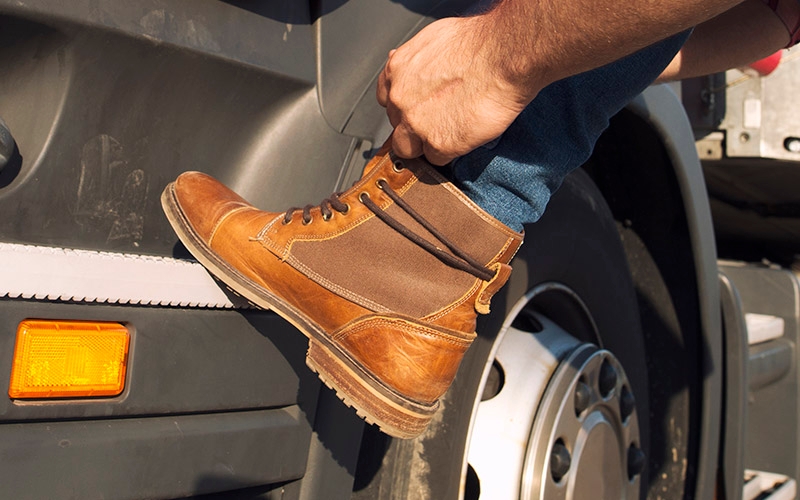
In conclusion, steel toe boots are a great way to protect your feet from injuries such as heavy objects, sharp-edged surfaces or hazardous materials. They are designed to give you safety and comfort. Steel toe boots may be expensive but it is worth the cost for the superior protection that it offers in hazardous situations. Many manufactures offer different styles and prices, which makes selecting the right boot for each person an easy task.
Of course, it’s important to make sure that your steel toe boots also fit properly in order to ensure maximum protection while working in a warehouse or any other activity involving heavy objects or hazardous materials.
FAQs
Are steel toe boots good for warehouse work?
Yes, steel toe boots are ideal for warehouse work as they offer protection to the feet from falling objects, sharp edges, and heavy machinery.
What are the best shoes to wear for warehouse job?
The best shoes to wear for a warehouse job are those that provide ample protection, support, and comfort. Steel toe boots, composite toe boots, and work sneakers are some good options to consider.
Are steel toe boots required in a warehouse?
In many warehouses, steel toe boots are required for all employees due to safety regulations and workplace policies. It is important to check with your employer to know the specific requirements.
What type of footwear is required in a warehouse?
The type of footwear required in a warehouse often depends on the company’s policies and safety regulations. Steel toe boots, composite toe boots, and other safety shoes are commonly required.
Should I wear boots to a warehouse job?
Yes, it is recommended to wear boots to a warehouse job as they offer more protection than regular shoes. Additionally, they provide support and stability, reducing the risk of slips, trips, and falls.
How much weight can a steel toe boot withstand?
The weight a steel toe boot can withstand varies depending on the manufacturer and model. However, most steel toe boots are designed to withstand up to 75 pounds of pressure.
Can you wear steel toe boots all day?
Yes, you can wear steel toe boots all day. However, it is important to choose a pair that is comfortable and fits well to prevent foot fatigue and discomfort.
Why wear safety boots in a warehouse?
Wearing safety boots in a warehouse provides protection to the feet from various hazards, such as falling objects, sharp edges, and heavy machinery. Additionally, they offer support and stability, reducing the risk of slips, trips, and falls.
What are warehouse safety shoes?
Warehouse safety shoes are footwear designed to protect the feet from various hazards in the warehouse, such as falling objects, sharp edges, and heavy machinery. They often have steel or composite toes, slip-resistant soles, and provide ample support and comfort.
Who has the most comfortable steel toe work boots?
There are many brands that offer comfortable steel toe work boots, including Timberland, Wolverine, and Red Wing. It is important to try on different brands and models to find the one that fits best and provides the most comfort.
See Also:
- Best work boots for neuropathy 2023
- Best work boots for summer 2023
- Best wellington work boots 2023
- Best keen work boots 2023
- Best work boots for overpronation 2023
